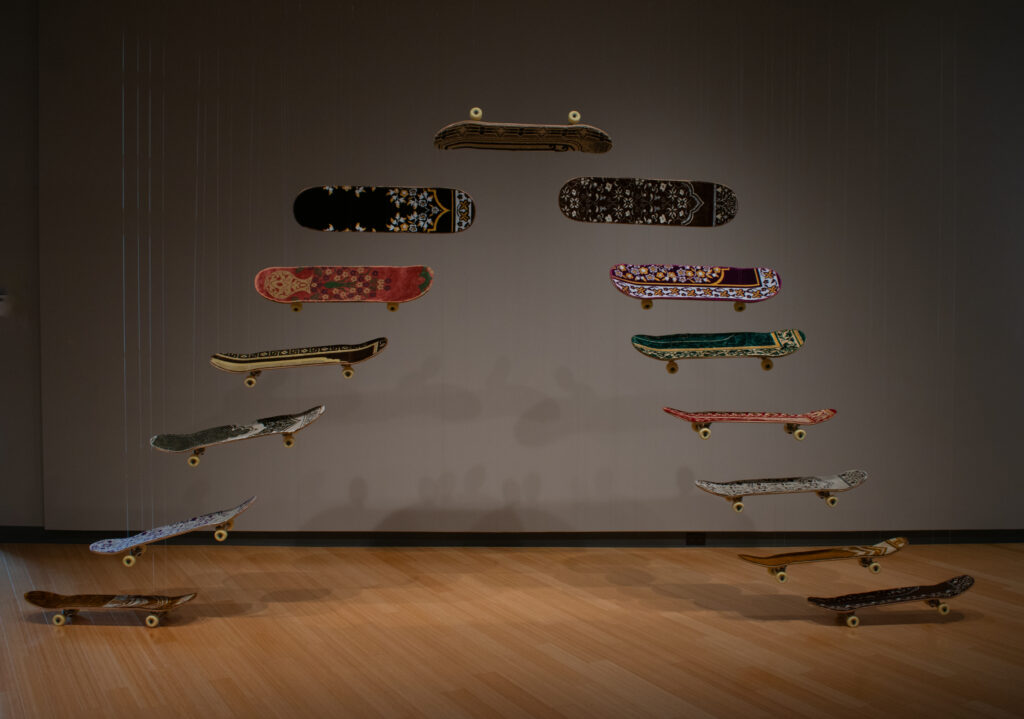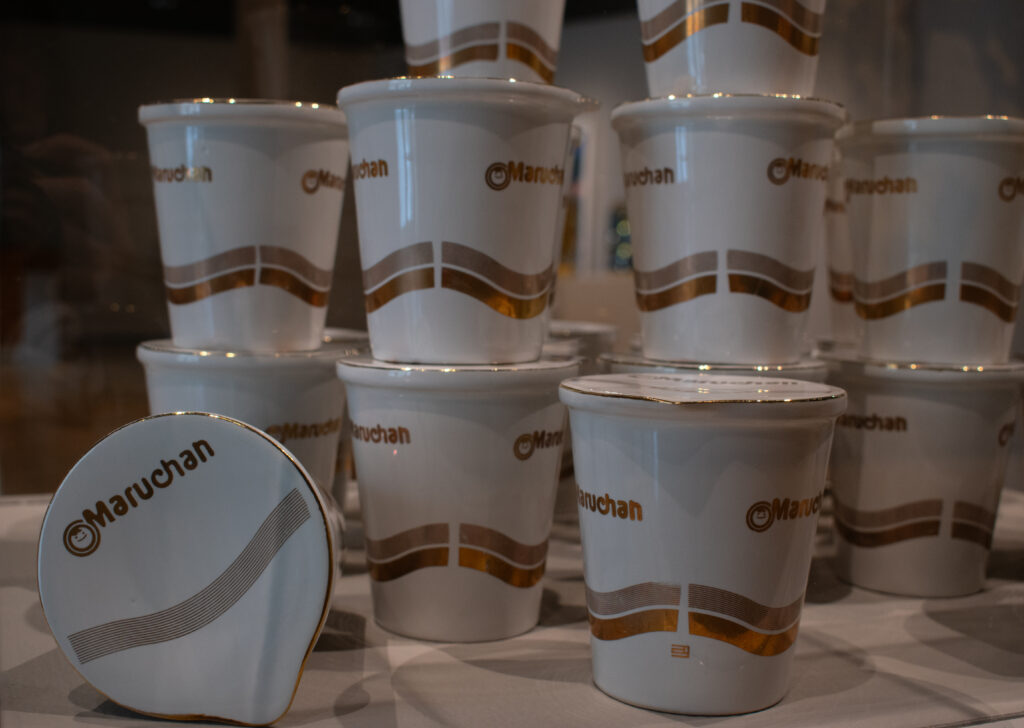OWEN WAGNER
Special to the Leader

From Sept. 3 to Nov. 22, Marion Art Gallery will be hosting Tradition Interrupted, an exhibit which showcases works from 12 international artists that use ancient artistic practices to represent contemporary ideas.
The reception for the event was Friday, Sept. 6 from 6-9 p.m. This reception was free and open to the public.
Carrie Lederer, the curator of the exhibit, said that the dichotomy of the exhibit is designed to remind us not to abandon tradition. This exhibition includes stainless steel, oil and acrylic, mirror mosaic, felt, porcelain and much more.
The participating artists are: Anila Quayyum Agha, Pakistan; Faig Ahmed, Azerbaijan; Camille Eskell, U.S.; Mounir Fatmi, Morocco; Ana Gómez, Mexico; Shirin Hosseinvand, Iran; Dinh Q. Lê, Vietnam; Steven Young Lee, U.S.; Jaydan Moore, U.S.; Ramekon O’Arwisters, U.S.; Jason Seife, U.S.; and Masami Teraoka, Japan.
Barbara Räcker, the director of the Cathy and Jesse Marion Art Gallery, commented, “They’re not criticizing tradition, they’re celebrating and trying to preserve tradition,” while praising the inclusion of Asian and Middle Eastern cultures in the curation process.
“Teardrop (After Robert Irwin),” created by Anila Quayyum Agha, features stainless steel cut into geometric and floral ancient Islamic designs. Her piece represents the dichotomy of emotions refugees experience such as “pain and peace” as well as “strength and struggle.”
Dinh Q. Lê, who created “Portrait of the Palace,” was born in Hà Tiên, Vietnam. One portrait features a child from the infamous S-21 prison. These portraits are created with C-print and linen tape. This reminds viewers of traditional Cambodian structures.
Using oil and acrylic, “Ocean Bed” by Jason Seife is inspired by Middle Eastern carpet designs. Seife takes great pride in pushing the boundaries of this ancient practice to keep it in our contemporary culture.
“Star cluster at night,” “Camouflage,” “A beam of sunshine” and “Emerald” are the four works featured by artist Shirin Hosseinvand using Persian mirror mosaics. She is an Iranian-American artist well-known for merging ancient Iranian mirror mosaics with consumer objects such as, in this exhibit, Coca-Cola cans. Hosseinvand comments how, “In Iranian culture, mirrors and water represent purity, fortune, honesty and light. This symbolism is believed to be a driving force behind the use of mirrors in decoration.” She illustrates the meaning of her works by stating, “I believe that globalization and industrialism have developed a cultural interaction between nations, but it’s lacking the identity that any culture can offer to a product.”
Digital imagery, felt, silk, mixed media, wood, mirrors and platforms are all used in “F-Ezra: Made a Woman” and “Taskmaster Fez: Avadim (we were slaves), The Story of Joe” created by Camille Eskell. This piece constructs a story using a traditional Middle Eastern headpiece and an Ancient Egyptian hat worn by taskmasters. These pieces address gender bias in religion as well as the struggles of Eskell’s own family.
“Maximum Sensation” by Mounir Fatmi is a collection of skateboards with prayer rugs replacing the grip tape. Fatmi was born in Tangier, Morocco and grew up surrounded by Muslim prayer rugs. This piece mixes together Eastern and Western cultures to take on a completely new meaning.
Ana Gómez’s two pieces, “Vitrina from the Disposable series” and “Maruchan from the Disposable series” feature stoneware ceramics, porcelain ceramics with enamel, vinyl and gold varnish, as well as hand-painted shelves to comment on our culture of disposables. This piece shows us how disposable containers have replaced dinnerware.
Jacquard tapestry is used in “Geisha in Ofuro” by Masami Teraoka, an artist from Japan. It illustrates contemporary issues such as cultural collision, religious and political hypocrisy and sexual taboos.
“Gourd Vases with Lotus Pattern” by Steven Young Lee was created using porcelain ceramics and reflects how the artist has always found himself between two cultures. In his piece, he addresses his own struggles with identity, assimilation, place and belonging. Furthermore, it explores how to redefine our standards of beauty.
Jayden Moore, using silver-plated platters, forces the viewer to redefine how we see and understand discarded heirlooms in our contemporary society in his pieces “Specimen (Two Rectangles)” and “Specimen #5.” His work asks us to ponder on our desire to collect and commodify.
“Hal” by Faig Ahmed uses handmade Middle Eastern carpet designs to create a reinterpretation that looks to be melting into a puddle on a platform. The carpet addresses topics such as identity, change and loss.
Ramekon O’Arwisters presents five pieces named “Mending #15,” “Mending #34,” “Mending #16,” “Mending #22” and “Mending #20” using ceramic shards and fabric to create the feeling of comfort and healing, even when one is broken down. He draws on his past of growing up as a queer Black person.
The hours for the exhibit are Tuesday through Thursday, from 12 p.m. to 4 p.m., Friday and Saturday from 12 p.m. to 6 p.m. and Sunday from 12 p.m. to 4 p.m. The gallery is closed on Mondays, major holidays and summers.

